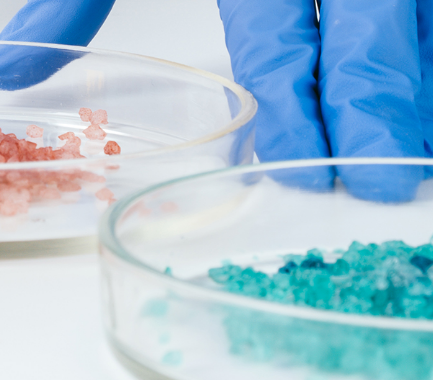Your contact
PENPET-Team - Hamburg

Tim Meister
Sales
Tel. +49 (0) 40 - 675 7 99 40
sales@penpet.de
Get in touch with us.
Diacetoneacrylamide (DAAM)
Diacetoneacrylamide (DAAM) is an organic compound that is mainly used as a monomer and comonomer for the production of polymer plastics and coatings. Two different synthesis processes are used for the large-scale production of the substance. Diacetoneacrylamide can therefore be obtained either by reacting acetone with acrylonitrile or from mesityl oxide and diacetone alcohol.
The substance can be used both as the sole starting material for the production of homopolymers and together with other comonomers for the construction of more complex polymeric compounds. It gives the polymers formed a hydrophilic character and, among other things, improves their permeability to water vapor. Because of this property, diacetoneacrylamide is used in the manufacture of contact lenses, adhesives, sealants, epoxies, polymeric films, hairsprays, lubricating oils, paints, varnishes, and coatings. The compound is an important alternative to toxicologically more questionable comonomers and is increasingly replacing them in sensitive areas of application.
At PENPET you get diacetoneacrylamide (DAAM) of the highest quality - from a reliable partner who will also meet your requirements in the long term. We look forward to receiving your inquiry for an individual offer. Prompt delivery of the crystalline solid can be made in packages with different weights.
CAS no. 2873-97-4
EINECS no. 220-713-2
Molecular formula: C9H15NO2
Synonyms: DAAM, N-(1,1-dimethyl-3-oxo-butyl)-2-propenamide, N-(2-methyl-4-oxo-2-pentanyl)acrylamide, N-(1,1-dimethyl-3- oxobutyl)acrylamide
Areas of application: Monomer and comonomer used in the manufacture of polymeric compounds used in the manufacture of coatings, paints, varnishes, epoxies, sealants, adhesives, hairsprays, contact lenses, polymeric films and lubricating oils
More Information
Diacetoneacrylamide (DAAM) is a compound with a complex structure that is best expressed by its alternative name (1,1-dimethyl-3-oxobutyl)acrylamide. Molecules of the substance consist of an acrylamide radical with a butyl group attached to the nitrogen atom, which has two methyl groups on its first carbon atom and a ketone group formed by the remaining three carbon atoms. Together with the terminal double bond of acrylamide and its carbamoyl group, the compound has three reactive sites, making it suitable for chaining and crosslinking reactions to build up polymeric structures.
Under normal conditions, diacetoneacrylamide (DAAM) is a solid in the form of white to yellow crystals and flakes. The compound has only a very faint odor. Diacetoneacrylamide melts at temperatures from 54 °C and changes into the gaseous state at temperatures around 100 °C, where it can polymerize spontaneously above its melting point. In aqueous solution, the substance can already form polymers at room temperature.
Diacetoneacrylamide is hydrophilic, hygroscopic and attracts moisture. It dissolves very well in water. The substance is also very soluble in many organic solvents such as ethanol, methanol, hexanol, acetone, benzene, chloroform, tetrahydrofuran and ethyl acetate.
When storing diacetoneacrylamide (DAAM), ensure cool, airtight, and dry conditions. The compound can form explosive peroxides in air. Contact with strong oxidizing agents and strong bases can also lead to dangerous, violent reactions.
Although the substance is combustible, it is thermally very stable. It can therefore be distilled without decomposing. Burning or decomposition of diacetoneacrylamide at very high temperatures produces acrid and noxious gases. Among other things, large amounts of carbon monoxide, carbon dioxide and nitrogen oxides can be released.
Diacetoneacrylamide (DAAM) is an irritating hazardous substance that can cause redness and painful irritation on the skin and eyes. Wetted parts of the body should be washed immediately with water and examined by a doctor if the symptoms persist. If the compound comes into contact with the eye, prompt ophthalmological treatment is required after careful rinsing under running water. Swallowing the substance can cause serious health damage. In addition, diacetoneacrylamide is suspected of impairing fertility or the health of the unborn child.
